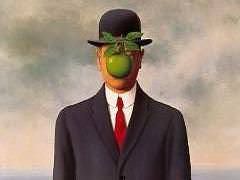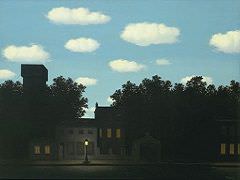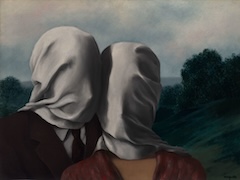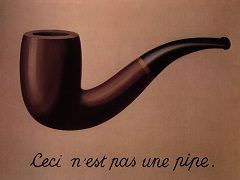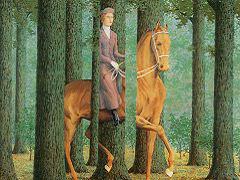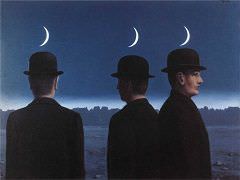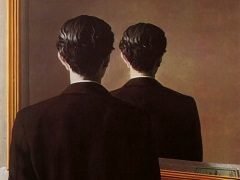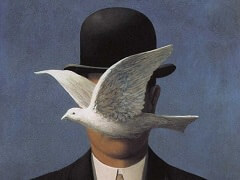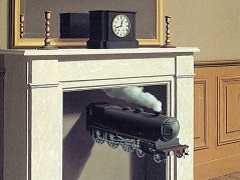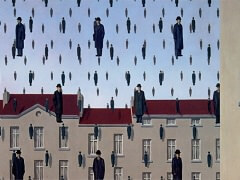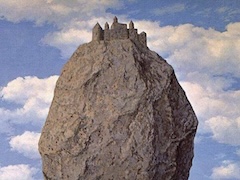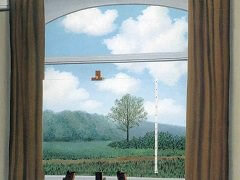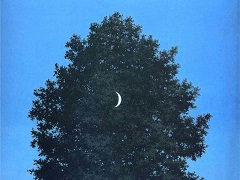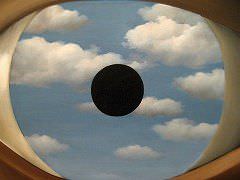The wonders of nature, 1953 by Rene Magritte
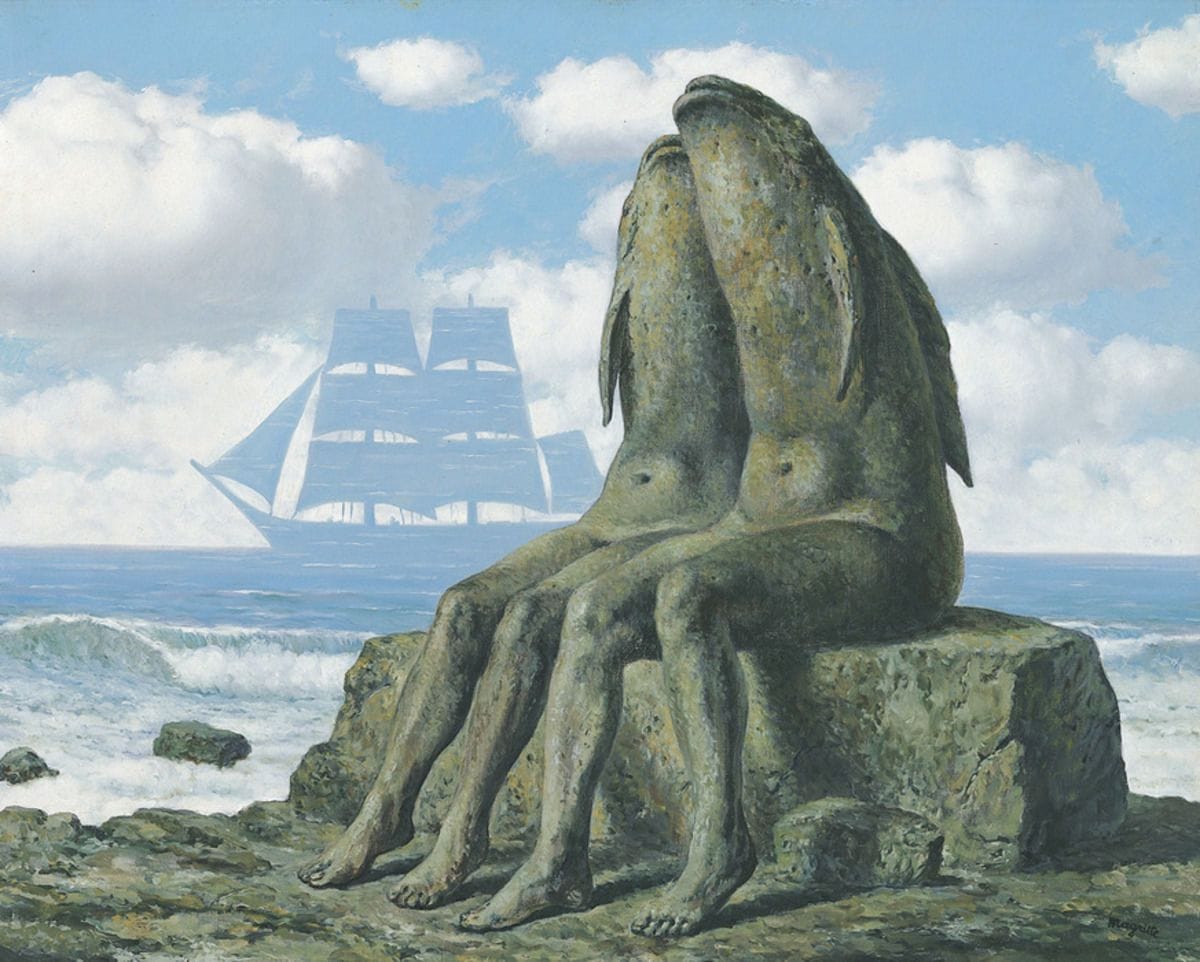
Rene Magritte is among the best-known Surrealists. His visionary work has influenced artists such as Marcel Broodthaers, Robert Gober, and Allan McCollum, as well as the imager in many advertisements and popular movies. The Wonders of Nature (1953) illustrates fully Magritte's poetic sensibility. Here he has depicted two fish-headed lovers apparently joined in song. The painting betrays an affinity to fellow Surrealist Salvador Dali, yet conveys a greater sense of whimsy and humor than the more bizarre and sexually provocative works of Magritte's Catalonian contemporary.
The conventional mermaid form of the fish-tailed, human-torsoed creature is reversed in as Les Merveilles de la nature, making a creature of fantasy even more unreal. Despite their petrification in stone, the figures appear to be very much alive, with an uncannily human quality, as Les Merveilles de la nature is exemplary of Magritte's use of the theme and appearance of petrification throughout the 1950s. The painting also contains visual elements found in earlier paintings, such as the ghost ship that blends with the waves on the horizon, which made its first appearance in The Seducer (1950), or the figures themselves, found in an earlier incarnation Collective Invention (1935).
Magritte, like many of the Surrealists, was well acquainted with the prose poem Les Chants de Maldoror by the nineteenth-century French poet Isidore Ducasse, who worked under the pseudonym Comte de Lautréamont. Among the illustrations that Magritte created for a 1948 edition of Lautréamont's work was a depiction of a fish with human legs sitting on a rock by the sea with a small ship coursing the waves in the distance. This association may account for the confusion over the painting's title, once given as The Lovers in a 1964 exhibition in Little Rock, Arkansas, and for a long time known at the MCA as Song of Love. Magritte had informed Joseph and Jory Shapiro, the original owners of the work, that the title was Le Chant d'amour. Yet, when asked by his friend Harry Torezyner at the time of his retrospective at The Museum of Modern Art in 1965, Magritte said that he could not remember the title. Research for the recent catalogue raisonné of Magritte's work revealed the painting's actual title and the date of creation, proving that the painting had been in a mermaid theme exhibition and a solo exhibition at La Siréne in Brussels in 1953, thereby identifying the sole work unaccounted for from this period, The Wonders of Nature (Merveilles de la nature).

